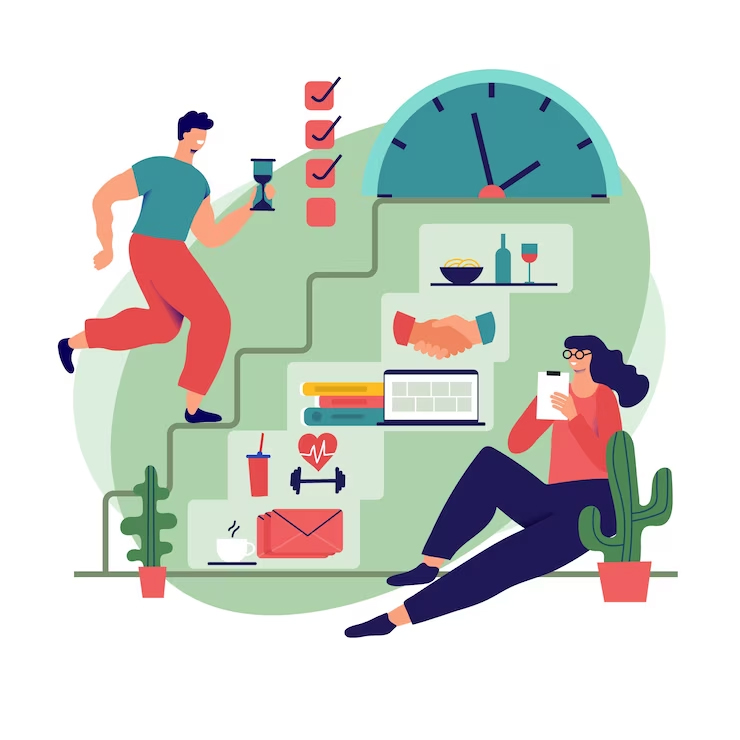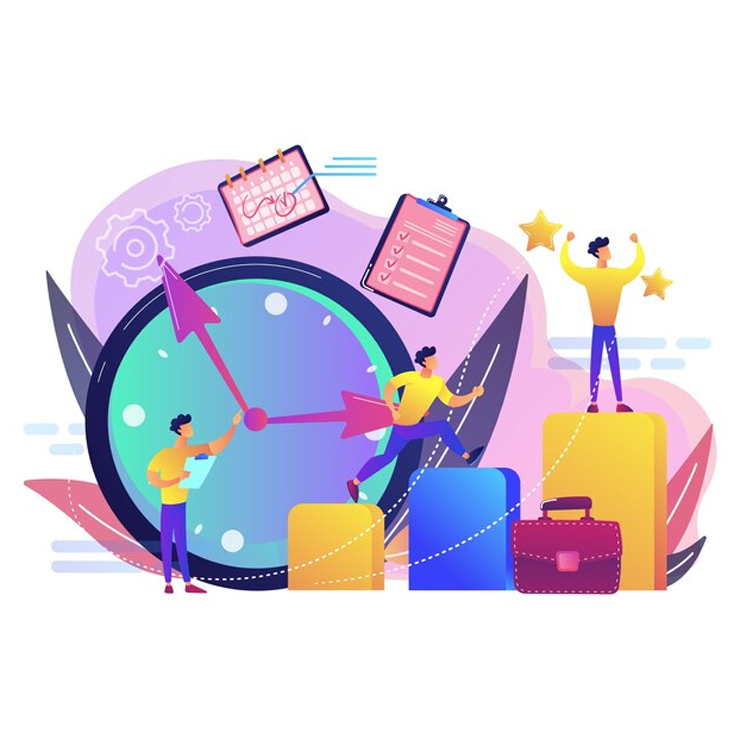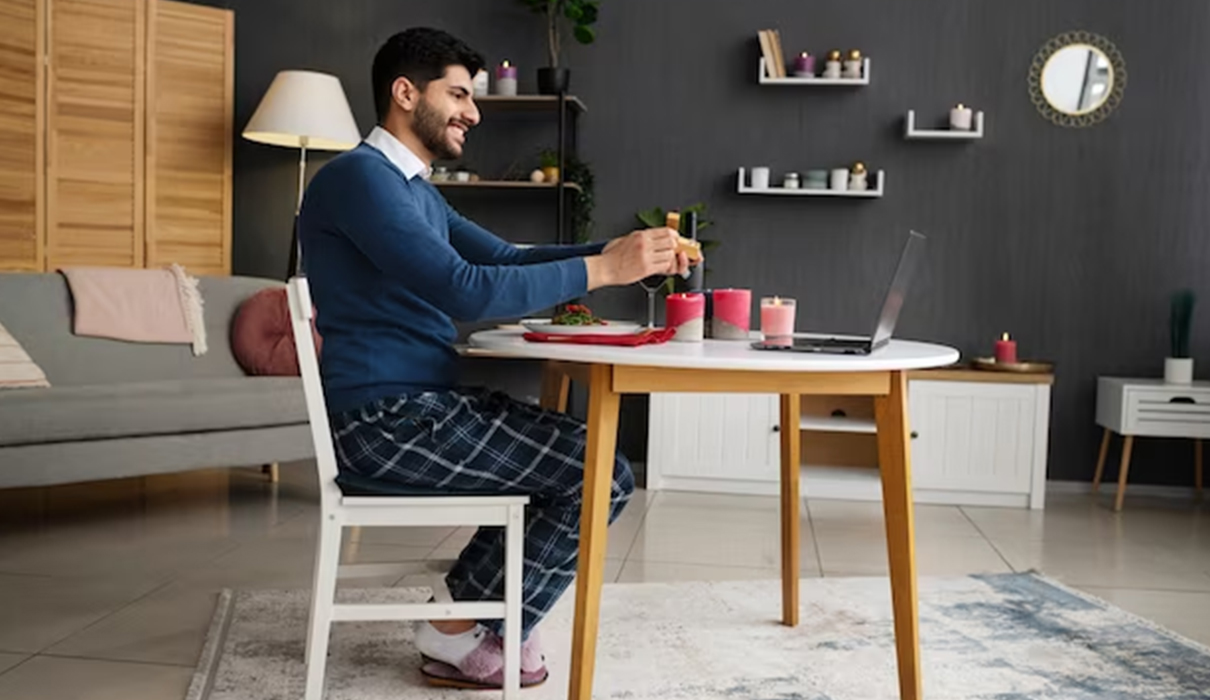The term “minimalist lifestyle” may invoke up images of a lean monk in a ragged robe sitting in a desolate room without Internet access. Minimalism, on the other hand, is not about living in squalor, against material goods and technology, or going vegan. The goal of minimalism is to make room for what matters most to you-and that including experiences, tasks, and time. Simplicity is important, but not oversimplified.
Minimalism has become increasingly fashionable, and there have been many seminars, workshops, and blogs about how to make it work for you at home and in your relationships. It is less clear how to navigate work, school, and productivity with this philosophy. But that is about to change
Minimalism is attractive to many because it simplifies and streamlines life without sacrificing quality. In terms of productivity, minimalism is primarily concerned with quality over quantity. Minimalism can truly benefit your workday if you accept that more isn’t better. It all begins with a simple idea: a lot of the items on your to-do list are not necessary. Spend more time on the things that matter and produce better results by simply focusing on your most important goals.
What is Minimalism?
Though minimalism is on the rise it is not new in the way people think. Chinese, Buddhist, and Stoic philosophies have taught “less are more” for hundreds of years. Think of Socrates, Albert Einstein, and Steve Jobs who embraced minimalism.
By focusing on minimalist values like despise for distractions, these influencers and innovators were able to achieve exceptional things.
How Minimalism Affects Productivity
Quality can be confused with quantity when we convince ourselves that cramming in a lot of tasks means we are productive. To feel accomplished, we invest our time in quick and easy activities rather than focusing on the more challenging and important pursuits.
You can accomplish more by doing less when you apply minimalist principles to your schedule, goals, and activities. Minimalism enables you to focus on the things that matter instead of forcing production through menial tasks.


These tips will help you to incorporate the minimalist way of life into your work
- Minimalism is the key to more productivity
Make sure you don’t let unimportant things get in the way of your goals and prevent you from living the life you deserve. Boost your productivity by embracing minimalist ideologies.
- Make sure your workspace is clean
You probably have a dedicated workstation in your home or office, regardless of whether you are a student, an artist, or an entrepreneur. A messy desk may be viewed as an indication of genius by some, but an untidy workspace could be costing you more time and focus than you realize.
We cannot focus and transition between tasks effectively when too much visual stimulus bombards us from a workstation. Those in a neat environment were able to perform a challenging task for 1.5 times as long as those in a cluttered environment.
- Streamline your to-do list
Taking care of tasks on your to-do list releases dopamine, a neurotransmitter that regulates the brain’s reward and pleasure centers. An ultra-long to-do list can leave you feeling guilty after you’ve crossed off small tasks from your list. It’s easy to become stressed and discouraged when you have a long list of tasks to complete.
Make your daily to-do list as minimalist as possible by using an eraser, delete key, whiteout, etc. The number of tasks you should complete each day should be limited to three. Top performers limit themselves to one daily task.
- Figure out what would be more essential to you
Priority was a singular word for hundreds of years. To differentiate the most important tasks from the less important, start by defining one goal or priority for the day. It wasn’t until the mid-20th century that we began to use the plural version, believing we could easily handle multiple priorities.
Ask yourself: will this activity help me achieve this goal? Remove it from your list if the answer is no.
- What are the most effective tasks?
Why do I have so many productivity problems?
What are the most common interruptions?
What are the friends and family members who take up the majority of my time?
Is there anything I can get rid of?
Is it possible to automate certain tasks?
Find out which tasks require delegation, automation, or elimination. By using this method, you can free up to 80 percent of your time while eliminating things that hinder your productivity, goals, and happiness.
- Say “no” when you need to
According to the saying, “If you’re good at something, you’re good at everything.
“This adage illuminates why it’s so imperative to learn to say “no” to tasks that don’t add value to your life or support your mission. To lead a minimalist lifestyle and boost productivity, it is vital to know how to say “no” to unnecessary meetings, urgent requests that are not your responsibility, social obligations you are dreading, and anything else that doesn’t add value to your life. It may be impossible for you to prioritize the things that matter to you if you don’t know how to say “no”. This will result in a decrease in productivity.
The most effective way of saying “no” is to say it politely yet firmly without hedging or stalling. The trick is to say “I don’t” instead of “I can’t.” “using the word ‘don’t’ allows one to reduce the feeling of empowerment in the self-regulatory goal pursuit, resulting in a positive effect on behavior, as well. Alternatively, stating “I am not capable of doing X” implies external limitations.” Replacing “I am not capable” with “I do not” can put you in a position of power and reduce the amount of room for debate.
- Organize your thoughts
How hard is it to reduce your to-do list to just three MITs?
If you get rid of less important tasks from your physical list, do you keep them on your “mental” to-do list?
Mental lists of things to do can also hinder productivity. Quantifying and organizing such lists is more challenging. Start each day with a “brain dump” to clear your mind of your mental to-do list.
Dedicate 30 minutes to writing out all the other tasks you need to remember and any worries that are floating about. If you’ve written everything down on paper or in a Word document, put your list away and forget about it. The mental to-do list should no longer haunt you after you complete this exercise, making it easier to focus.
- Pareto’s Principle explains this
Vilfredo Pareto, an Italian philosopher, an economist, noted that only 20 percent of the pea plants in his garden produced healthy peas.
As a result of this observation, he discovered and developed the “Pareto Principle” or “80/20 Rule.” In simple terms, the principle states that in any event, 20 percent of the inputs or tasks result in 80 percent of the output.
As an example:
The first 20 percent of an effort in a project generates 80 percent of its value.
A company generates 80 percent of its sales with 20 percent of its products.
80 percent of the company’s output is generated by 20 percent of the employees.
20% of a company’s customers complain 80 percent of the time.
Even if these rules are not rigid and the ratio isn’t always exactly 80/20, a minority is often enough to generate a majority, whether in business or life.
We can reduce our productivity by 80 percent by applying the Pareto Principle to our activities that are unnecessary or do not advance our mission. Identify tasks you can cut by analyzing your daily activities and asking yourself questions.
- Put an end to multitasking
Regardless of how skilled you believe yourself to be at multitasking, humans are very limited in their capacity to think simultaneously. It is easy for our brains to trick us into believing we can seamlessly shift between tasks, but this drains valuable energy when we have to refocus and backtrack. Multitasking may seem like it enhances efficiency, but research has found that habit can reduce productivity by 40 percent.
Besides hindering productivity, multitasking impairs creativity by preventing the ability to concentrate for extended periods. Begin by dedicating a portion of your time to one task. This will help you kick your multitasking habit. Don’t check social media platforms, time-wasting websites, or even email when your phone is powered off.
- Make sure you take meaningful breaks
During lunchtime, avoid bringing work home or working through it. Stress can be tamed and productivity can be enhanced by taking meaningful breaks. Our ability to remain engaged declines when we don’t take regular breaks. You should get up and away from your computer or desk every 60 to 90 minutes to get water, find a snack, socialize, or stretch. You shouldn’t eat lunch at your desk. Use different spaces for different activities.
Conclusion
We insist on making life complicated, even though it’s really simple. It holds today just as it did thousands of years ago. You can simplify your life by removing all the things that distract you from what matters. You can put your goals and your time at the centre of your work, studies, art, or productivity when you apply this philosophy. Take it one step at a time, from decluttering your workstation to cutting out unnecessary tasks. You will have more time, energy, freedom, and purpose as you eliminate clutter, stress, and time hogs.

